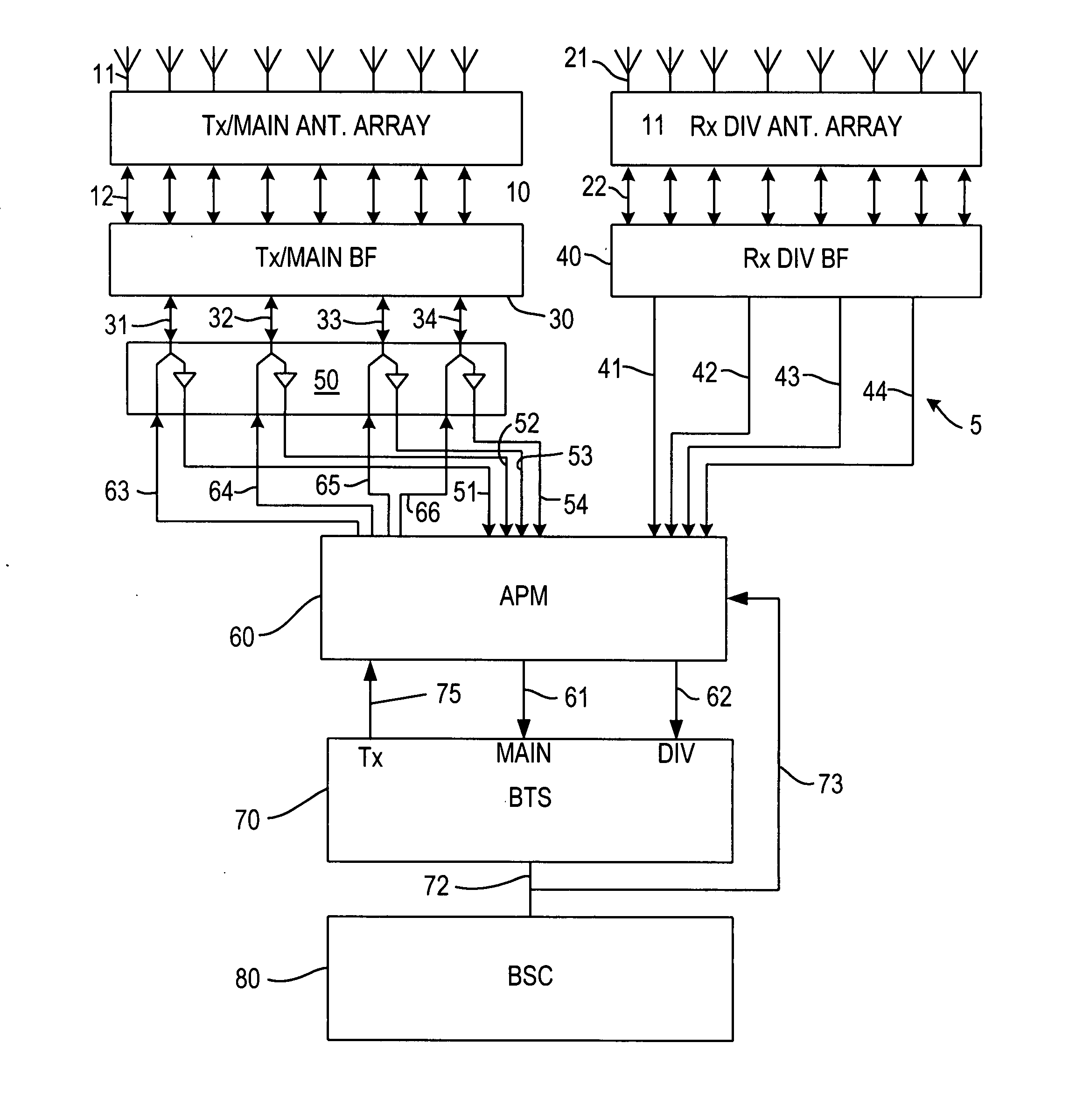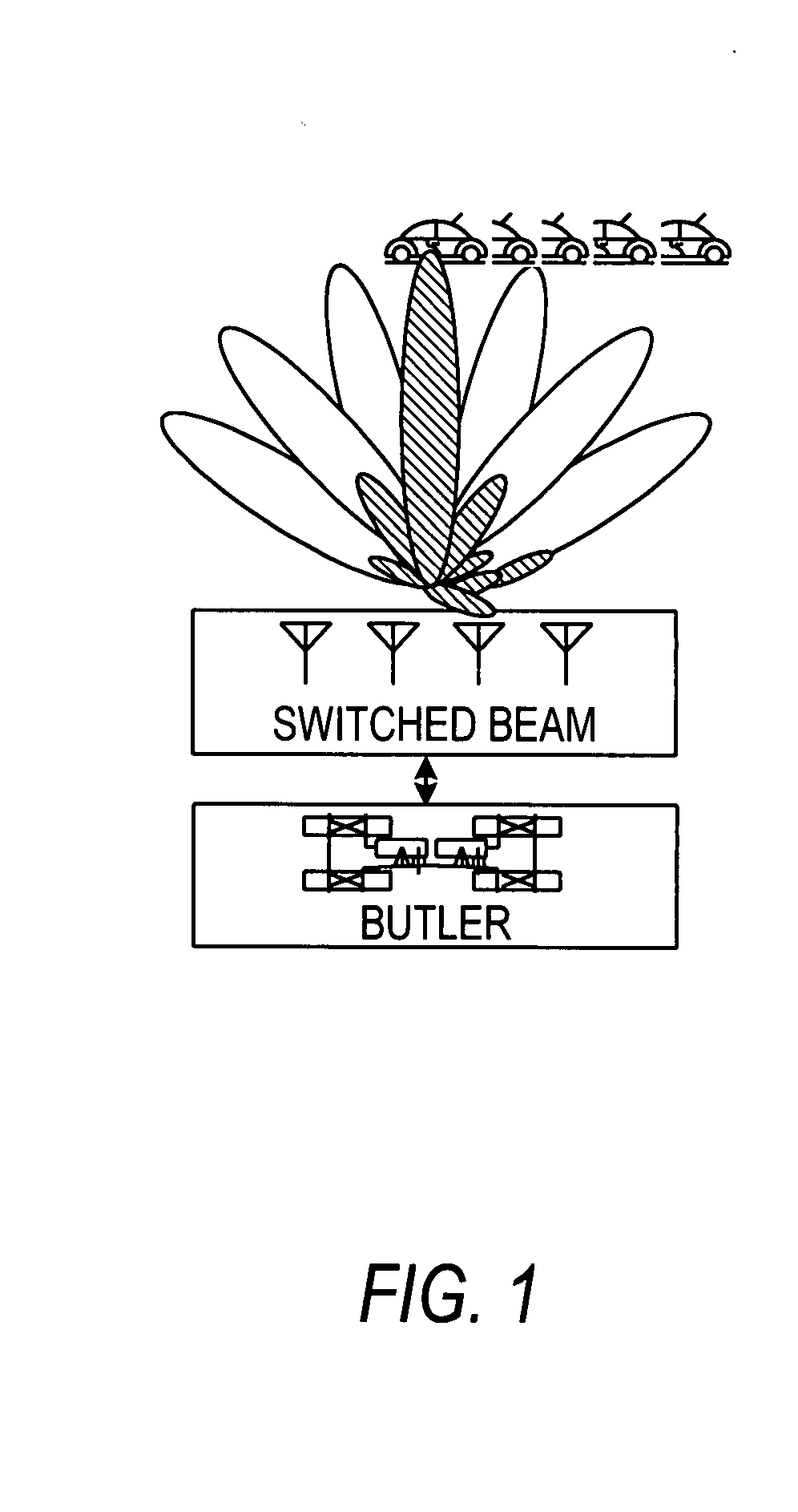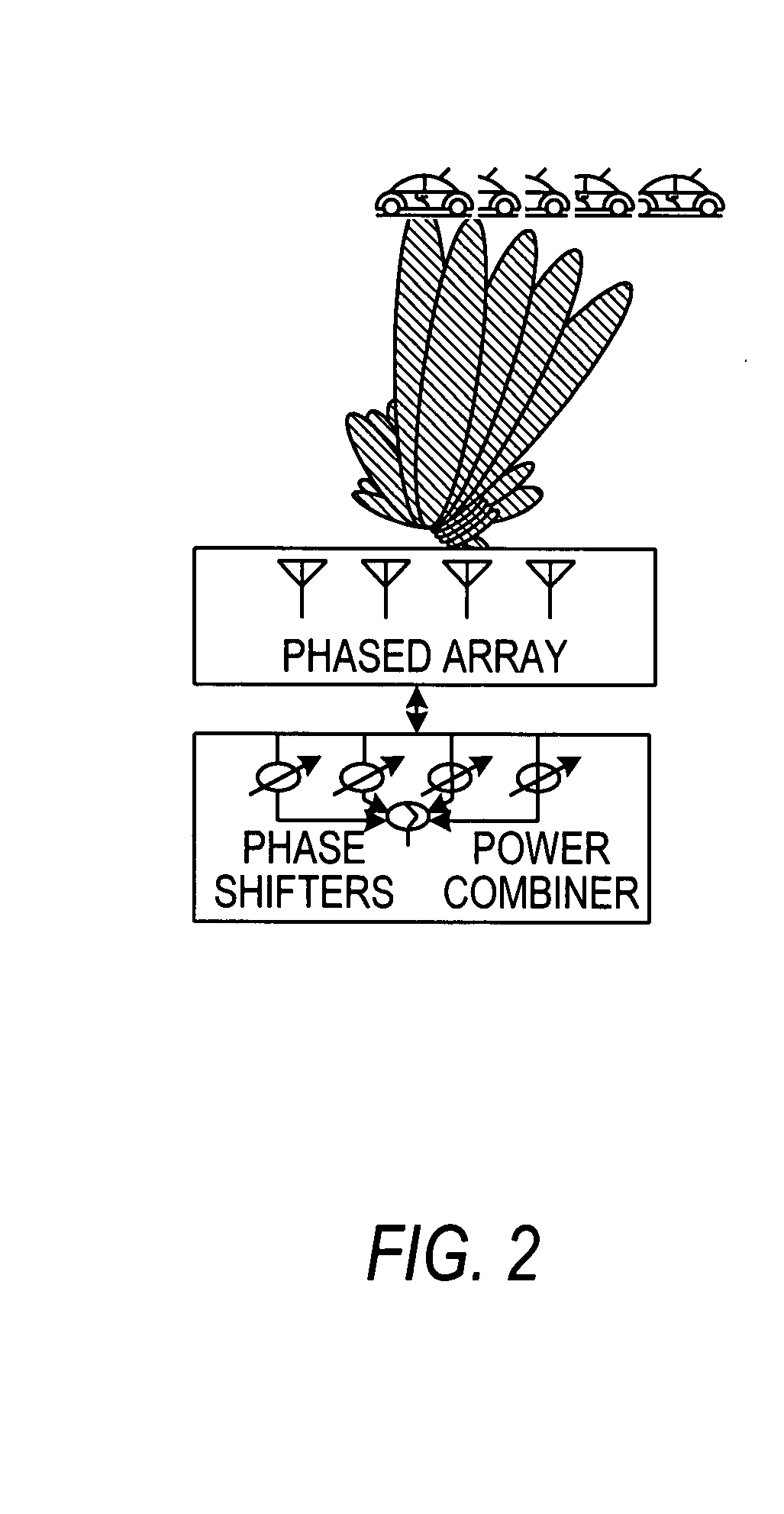Adaptive multi-beam system
a multi-beam antenna and antenna technology, applied in the field of wireless communication, can solve the problems of reducing the capital cost of installing base stations, not meeting the potential capacity discussed above, and not meeting the maximum reach of cell phones,
- Summary
- Abstract
- Description
- Claims
- Application Information
AI Technical Summary
Benefits of technology
Problems solved by technology
Method used
Image
Examples
Embodiment Construction
[0103] The invention will be described for the purposes of illustration only in connection with certain embodiments; however, it is to be understood that other objects and advantages of the present invention will be made apparent by the following description of the drawings according to the present invention. While a preferred embodiment is disclosed, this is not intended to be limiting. Rather, the general principles set forth herein are considered to be merely illustrative of the scope of the present invention and it is to be further understood that numerous changes may be made without straying from the scope of the present invention.
[0104]FIGS. 1, 2, and 3 are schematic diagrams of a switched beam beamforming network array, a phased-array beamforming network, and an adaptive null-steering beamforming network of the prior art which have been described above.
[0105] Referring now to FIG. 4, there is shown a high-level block diagram of an exemplary embodiment of a wideband appliqué...
PUM
 Login to View More
Login to View More Abstract
Description
Claims
Application Information
 Login to View More
Login to View More - R&D
- Intellectual Property
- Life Sciences
- Materials
- Tech Scout
- Unparalleled Data Quality
- Higher Quality Content
- 60% Fewer Hallucinations
Browse by: Latest US Patents, China's latest patents, Technical Efficacy Thesaurus, Application Domain, Technology Topic, Popular Technical Reports.
© 2025 PatSnap. All rights reserved.Legal|Privacy policy|Modern Slavery Act Transparency Statement|Sitemap|About US| Contact US: help@patsnap.com



